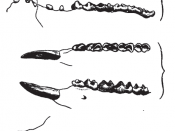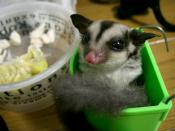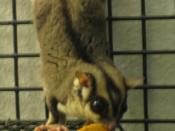Organism Physiology of the Sugar Glider
1 |
4 |
Organism Physiology of the Sugar Glider
The evolution and adaptation of an organism are essential to its possibility of survival. Many organisms have evolved over the course of many years, decades, and even centuries. The evolution of these organisms has caused several changes in their internal and external make-up. Oftentimes it is the environment that creates the need for the adaptations, however there are other factors that may contribute as well. The sugar glider also known as sugar bear is one such organism that has been influenced by these changes and has evolved accordingly.
According to Booth (2003) "sugar gliders (Order: Marsupialia; family: Phalangeridae; species: Petaurus breviceps) are small arboreal marsupials that live in colonies of up to 12 animals with a dominant male" (p.
228). The arboreal nature of the sugar gliders causes them to feel more secure when dwelling in areas that are populated with trees while living in the wild. The gliders are also omnivorous and prefer a healthy diet of sap and gum found in the trees. They have adapted long sharp incisors for breaking the bark from the tree to gain access to the sap and gum. Although, the sugar gliders are not big in stature, they can be very aggressive, territorial, and at times causing fatal injuries to other gliders that impose on their territory. The aggressive behavior is also responsible in part to the sugar glider's secondary name of the sugar bear. The sugar glider or sugar bear will stand up on its hind legs, spread its body out, and make a loud buzzing sound to scare off predators.
The gliders...


